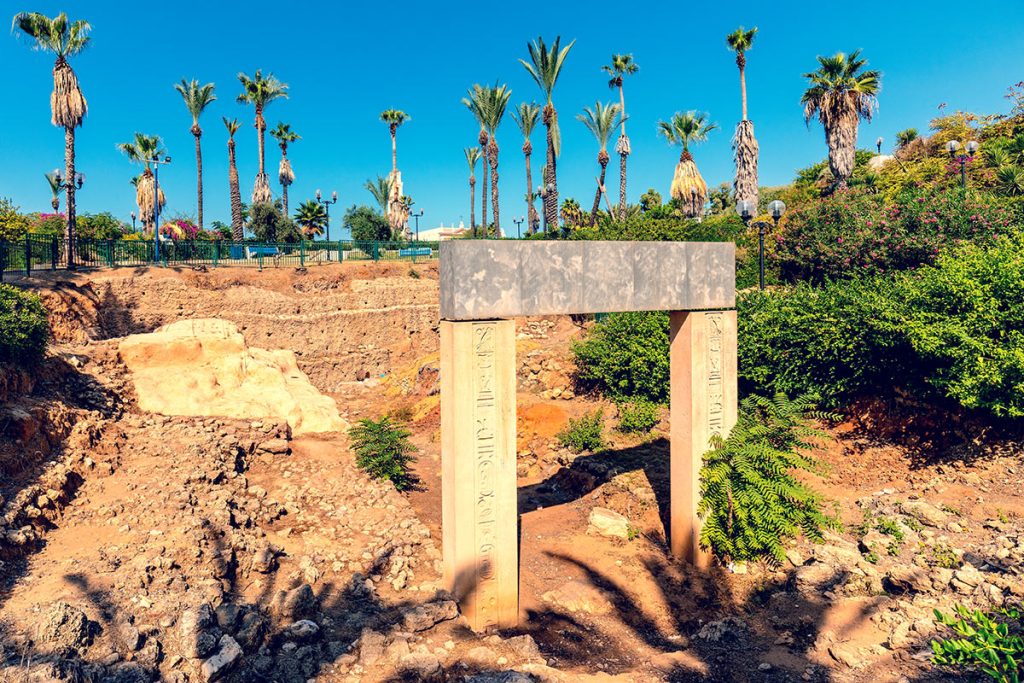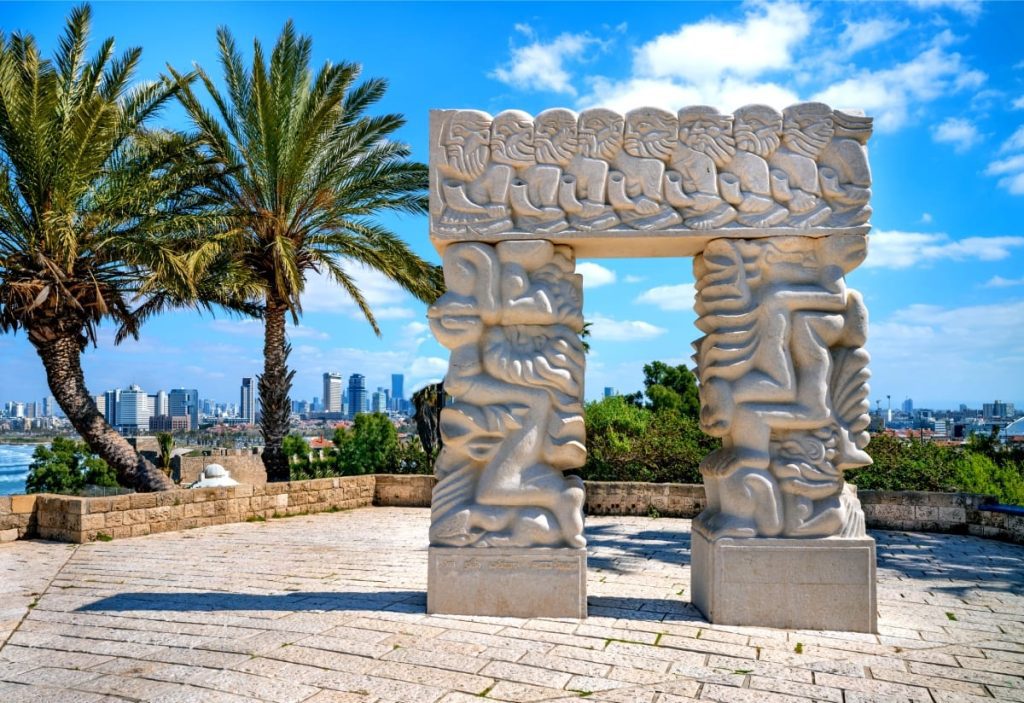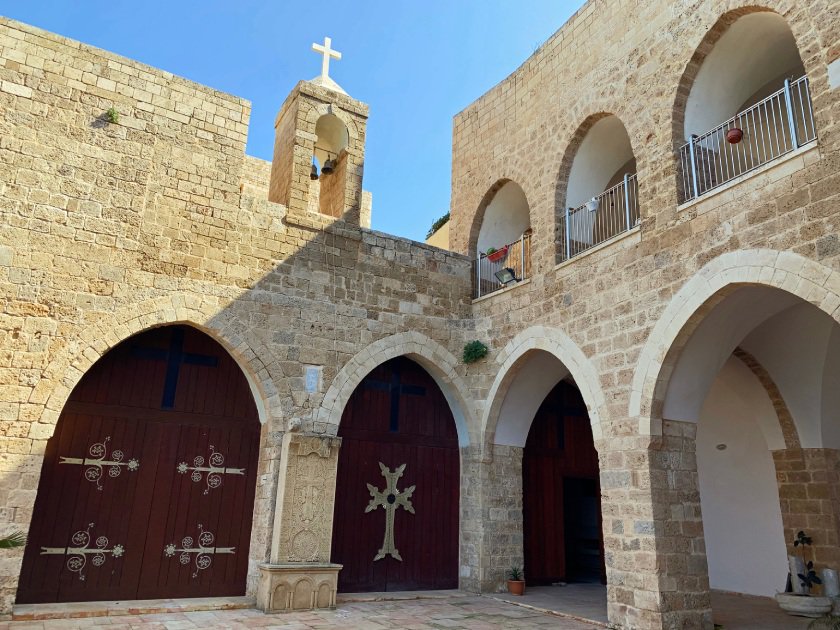When touring Old Jaffa at some point you will run into the intriguing-looking Ramesses II Gate Jaffa. This gate is not the original but it has a very important significance! But first, you should note that Jaffa is one of the ancient port cities in Israel and the Mediterranean basin. It has a strong link to the historic events that took place in the Land of Israel in particular and the Eastern Mediterranean basin in general, ever since the dawn of settlement there. It is built on a high cliff that juts from the shoreline into the sea and the ports lie at its foot.

Ramesses II Gate Jaffa
We learn of its history from historical sources as well as from excavations that took place in Jaffa and its environs. The Bronze Age, the Period of Egyptian Rule: The most ancient remnants discovered in Jaffa are the remnants of a glacis that surrounded the hill during the 18th century B.C.E. The remnants from this period, the period of the Egyptian conquest, attest that Jaffa was a city under Egyptian control on the model of other cities in Canaan.

Some More About RamessesII Gate Jaffa
In the central excavation area (area A) currently located in the Ramses Gate Garden, remnants of a community from the close of the 17th century and the first half of the 16th century BCE were discovered. The remnants of buildings built out of bricks on stone foundations were found from the Late Bronze Age (the latter half of the 16th century and the 15-century BCE.).
Old Jaffa Ultimate Guide

From the Late Bronze Age (13-1400 BCE), three settlement layers were discovered: In the lowest layer, the remnants of structures and a granary built out of unhewn stones were discovered. Above it, we find the remains of an entrance gate to a luxurious palace from the Egyptian Pharaoh Ramses II (1237-1304 BCE).
Saint Nicholas Monastery Jaffa Suspended Orange Tree

Between 1956 and 1962, fragments from the monumental facade that once adorned the entrance to a gate in a fortress of Ramesses II (ca. 1279-1212 BCE) were unearthed by Jacob Kaplan during excavations in Jaffa.

Furthermore, the gate artwork was built out of hard and chiseled sandstone in which hieroglyphics bearing the titles and portions of the name of Ramesses II are engraved. The walls were constructed out of bricks, and on top of them are remnants of the gate (the bronze axle of a wooden gate has been found) and the Egyptian fort that was destroyed in a vast conflagration (the end of the 13thCentury and beginning of the 12th Century BCE.)

